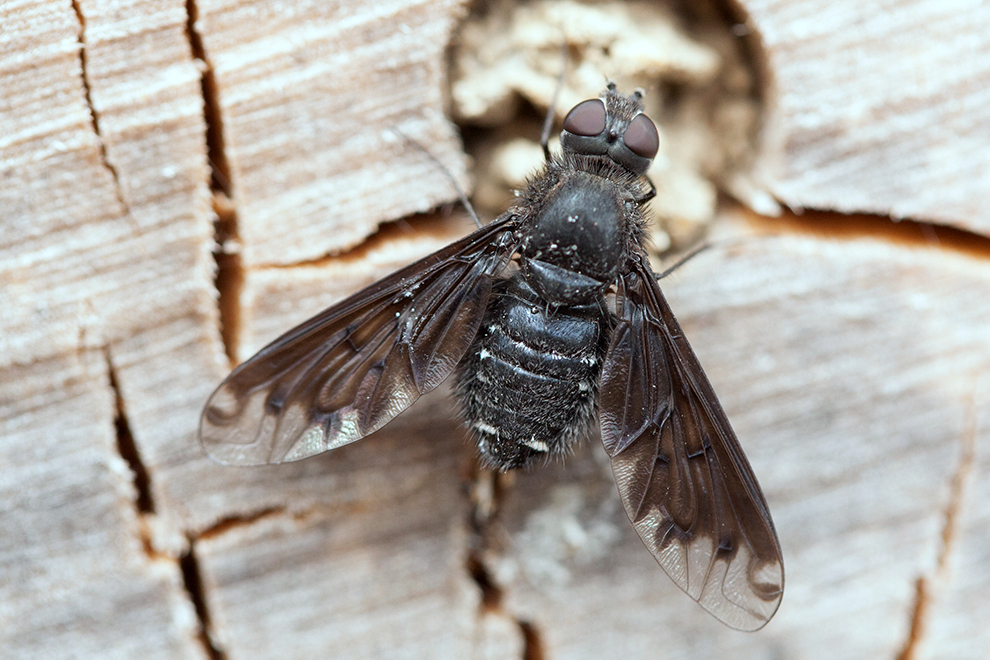The Anthracite Bee-fly, Anthrax anthrax
STOP PRESS: Michael Woods recorded Anthracite Bee-fly near Canterbury in 2018 (see below), and has found it at the same location in May 2019, the first sign that this species could now be breeding in the UK.

Anthracite Bee-fly, Anthrax anthrax - photo by Rob Mills
In August 2016 a new bee-fly was confirmed in Britain, when Rob Mills photographed it in his Cambridgeshire garden. It has been given the names Black Bee-fly or Anthracite Bee-fly, and its rather alarming scientific name of Anthrax anthrax derives from the Greek for coal, referring to its colour.
Like several of the bee-fly family, this distinctive species lays its eggs in and around solitary bee nests, and the fly's larva takes over the bee nest. The Anthrax bee-fly is particularly associated with mason bees (genus Osmia) and other solitary bees, and on the continent has benefited from the popularity of 'bee hotels', even in urban areas.
There are museum specimens of Anthrax anthrax from 1929–1930 that are labelled as being British but are suspected to have originated from the continent. It has not been seen again in Cambridgeshire since Rob's 2016 sighting, but another one was reported by Michael Woods from near Canterbury, East Kent, in June 2018 (see the article in Newsletter 6). If it does establish itself it could become a familiar sight in gardens. We are keen to monitor its spread, and records, preferably with photos, can be added to iRecord. May and June are the peak months for it on the continent, but its flight period can extend into August or even September.
Further information:
- Mills, R., and Harvey, M.C. 2016. Anthrax anthrax (Schrank) (Diptera, Bombyliidae) found in Britain. Dipterists Digest 23: 225–226 (PDF download)
- Black Bee-fly on the Buglife website
- News from the Netherlands via Nature Today (by John Smit, in Dutch)
